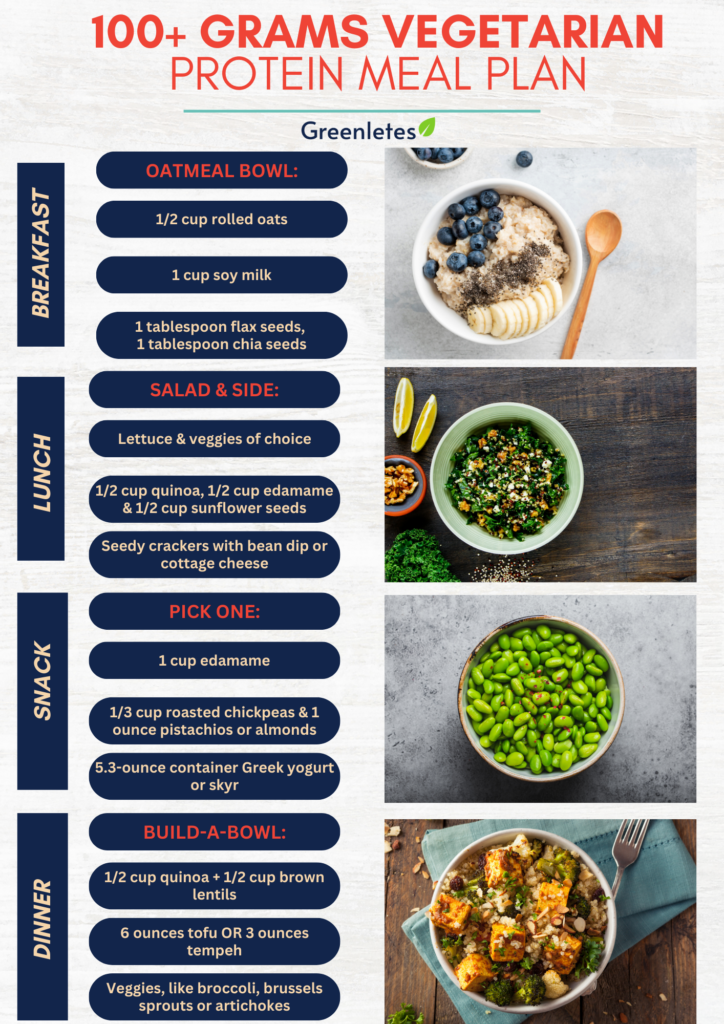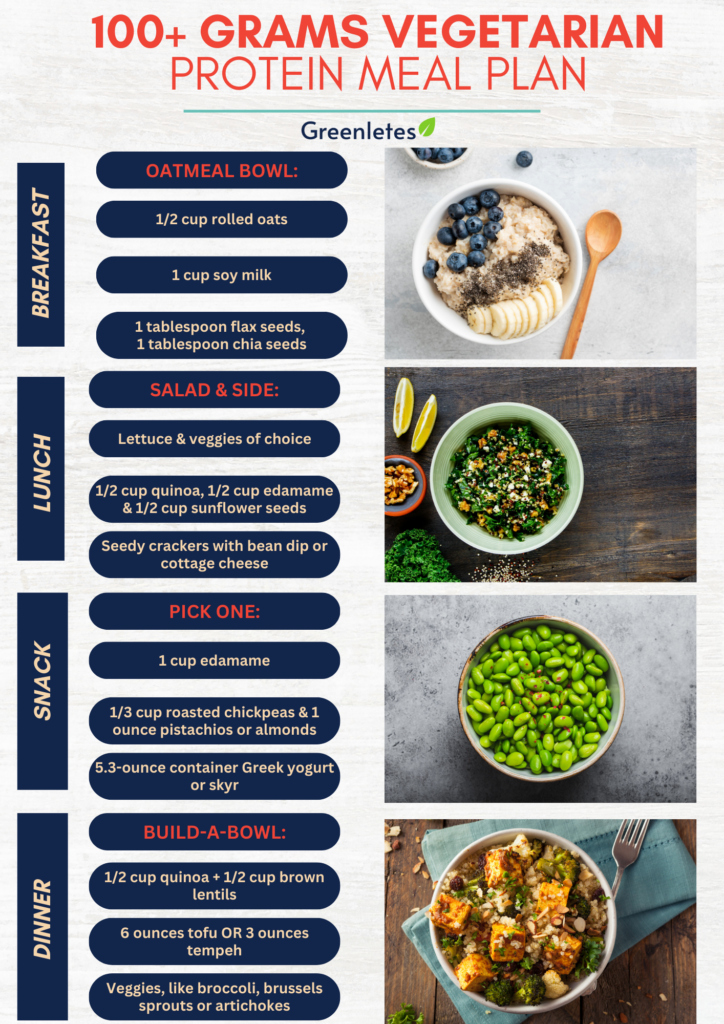Protein is an important macronutrient that helps keep you full, contributes to muscle growth, and aids in weight loss efforts. If you don’t eat enough protein, you may feel extra hungry and crave sugary foods. And without proper planning, you may be eating less protein than you need on a vegetarian or vegan diet.
Most active people need at least 1.2 to 1.6 grams per kilogram of body weight (0.54 to 0.72 grams per pound) per day. For a 150-pound person, that’s about 80 to 100 grams of protein per day. So how do you eat so much vegetarian protein every day?
I have been vegetarian for 10+ years and have worked with hundreds of plant-based athletes. Getting enough protein is possible and not as difficult as you might think.
How can a vegetarian get protein?
There are many sources of protein for vegetarians. Let’s divide them into five groups:
Dairy and eggs
Unlike the vegan diet, vegetarians eat dairy products and eggs. This includes Greek yogurt, which has about 15 grams of protein per ½ cup, as well as milk and cheese. A cheese stick has about 7 grams of protein and a large egg has 6 grams of protein.
Dairy is an excellent source of calcium and vitamin D, and eggs have vitamin D and vitamin B12. These nutrients are harder to get from plant sources, so many vegetarians eat dairy and eggs to fill in the nutritional gaps.
Beans and legumes
This food category offers the most variety, affordability and convenience. Most canned beans have about 6 to 8 grams of protein per ½ cup. Legumes are similar to beans and include lentils, chickpeas, fava beans and others.
Here are some of the more common varieties of beans and legumes:
- Black beans
- Red beans
- Great Northern Beans
- Cannelini beans
- Chickpeas
- Black Eyed Peas
- split peas
- Butter beans
- Coffee beans
- red lentils
- Peas
- Adzuki beans
- Pinto beans
- Green beans
- Edamame beans
- Bean
Soy products
Soy foods such as tofu, tempeh and edamame are high in vegetable protein. Three ounces tofu has 9 grams of protein and 3 ounces of tempeh has 18 grams of protein. Edamame is a soybean that is also packed with protein.
Soy products are rich in plant-based calcium, which makes them ideal for dairy products. And tempeh is a fermented soybean, which means it also has gut-friendly probiotics.
Nuts and seeds
Although nuts and seeds are higher in fat than protein, they still have some protein. For example, one ounce of peanuts or almonds has 6 grams of protein. Additionally, one ounce of pumpkin seeds has 8 grams of protein.
Nuts and seeds come in many varieties and make a great topping on a dish for added crunch, protein, healthy fats and texture. Here are some of the more common types:
- almonds
- Peanuts from Aegina
- Walnuts
- pecan
- Hazel
- Brazilian peanuts
- Sunflower seeds
- Pumpkin seeds
- Chia seeds
- Flax seeds
- Hemp seeds
But
Some vegetarian protein sources don’t fit neatly into the other categories. Seitan, for example, is a textured grain that mimics the consistency of meat and has 15 grams of protein in 3 ounces. Some meat substitutes, like Beyond or Impossible Burgers, or faux chicken bites in general, also have plenty of protein. But they’re usually high in saturated fat, so eat them sparingly.
Finally, protein powders and bars are also good sources of vegetarian protein. You get more nutrients from the whole foods on this list than the processed “others,” so eat these convenience foods sparingly.
Vegetarian meal plan with 100+ grams of protein
Now that you know all the top vegetarian sources of protein, you may be wondering how to combine them to reach your recommended daily allowance. Below is a sample meal plan for a vegetarian diet day with 100 grams of protein

breakfast
Protein: 22 grams
Increase the protein in a simple bowl of oatmeal.
Start with ½ cup rolled oats, add 1 cup soy milk, 1 tablespoon flaxseed, 1 tablespoon chia seeds, and your favorite fruit. Microwave for 1 minute and enjoy!
To add another 4 grams of protein, add a spoonful of peanut butter!
Lunch
Protein: 30 grams
You might think a salad is low in protein, but this one has the right protein-packed plant ingredients.
Combine kale with shredded carrots, ½ cup edamame, ½ cup quinoa and ¼ cup pumpkin seeds and top with your favorite dressing for 20 grams.
On the side, eat crackers with cottage cheese or bean dip for 10+ more grams of protein.
Junk food
Protein: 15 grams
Feeling hungry between meals? Ask for one of these protein snacks.
- Greek yogurt-siggi 16 g
- 1 cup edamame
- ⅓ cup roasted chickpeas + 1 ounce pistachios or almonds
Dinner
Protein: 35 grams
Customize a protein-packed bowl to suit your tastes.
Mix ½ cup lentils with ½ cup quinoa. Fill it with 6 ounces of tofu or 3 ounces of tempeh and use your favorite marinade to add flavor. Add some protein-rich vegetables like broccoli, cauliflower, Brussels sprouts or artichokes. Then sprinkle in some hemp seeds or sliced almonds for texture.
Which vegetarian food has the highest amount of protein?
Soy foods such as tofu, tempeh, edamame and soy milk are higher in protein. Use them whenever your plant-based meal needs a protein boost.
Which vegetable has the most protein?
Believe it or not, some vegetables have protein. Broccoli, artichokes, potatoes, asparagus and corn have about 2 to 3 grams of protein per serving. When you combine plant sources of protein, every gram counts!
